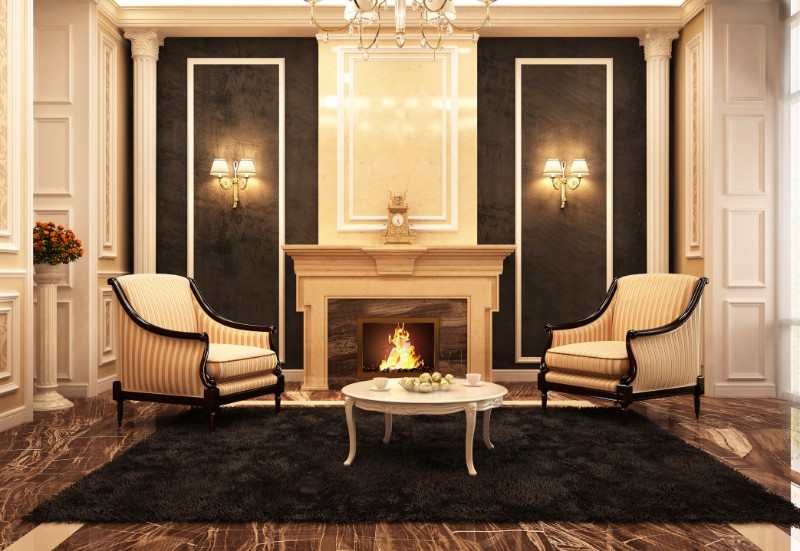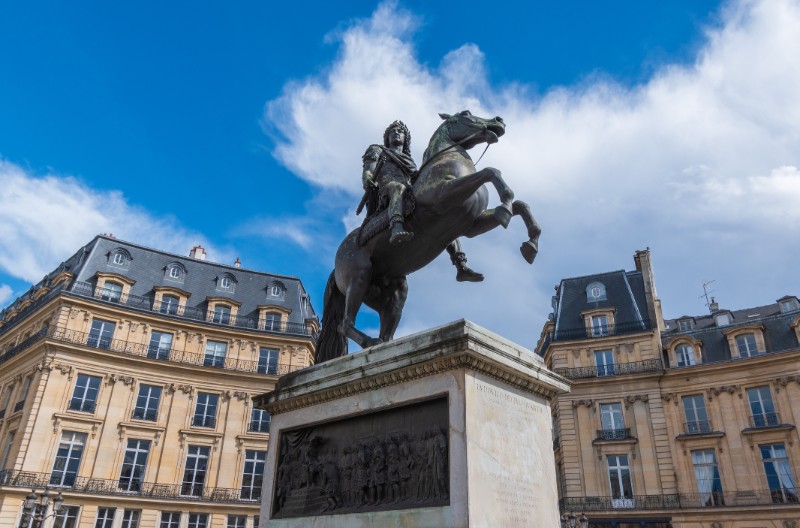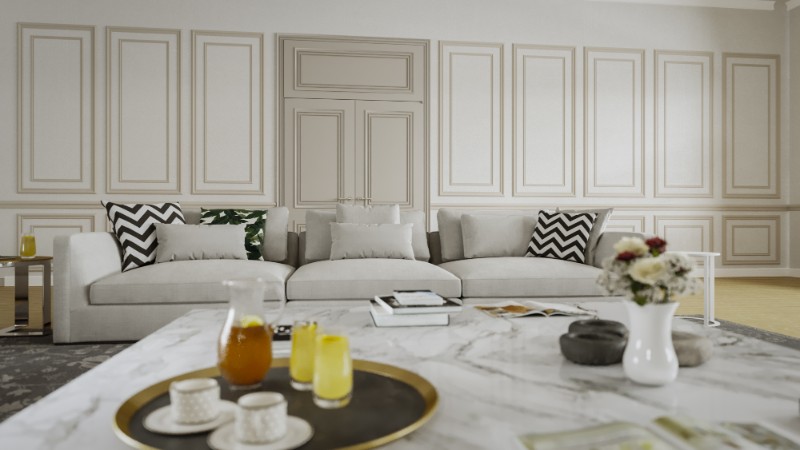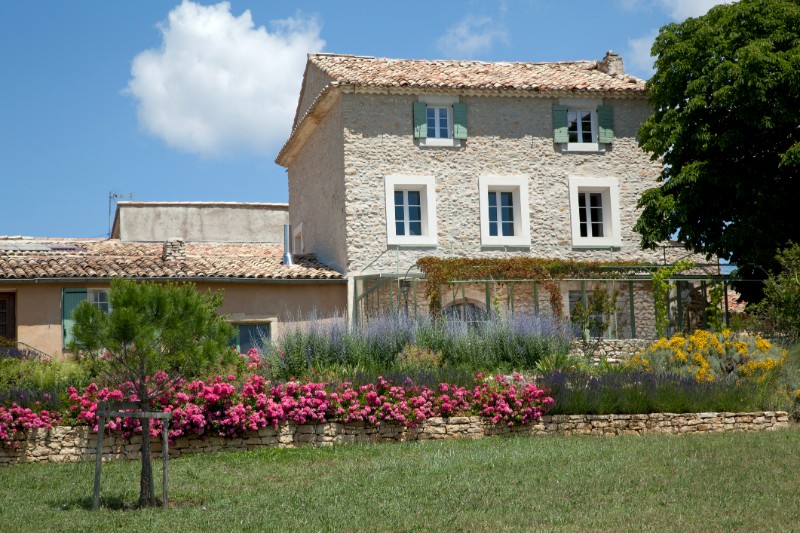
French luxurious home decor is known for its timeless elegance, blending classic design principles with modern innovation. Rooted in a rich history of artistry and craftsmanship, French interiors are characterized by attention to detail, refined materials, and a balance between luxury and comfort. From the ornate palaces of Versailles to the chic apartments of Paris, French interiors have evolved while maintaining a distinctive allure. Today, the French luxury home decor market continues to set trends globally, embracing new ideas in luxury home decor while staying true to its heritage of sophistication and grandeur.
In the luxury real estate market, high-end decor plays a significant role in defining the character and value of a property. Luxurious furnishings, fine art, and custom accessories not only enhance the aesthetic appeal of a home but also reflect the taste and status of the owner. Investing in luxurious, high-quality decor ensures that a home maintains its value and desirability in the long run. Each piece of furniture, fabric choice, and decorative accessory is meticulously curated to create an ambiance of exclusivity and refinement.
Table of Contents
Historical Influences on French Interior Design

French interior design has been shaped by centuries of artistic and cultural movements, drawing inspiration from various historical periods. From the opulent Baroque and Rococo styles of the 17th and 18th centuries to the more understated elegance of the Neoclassical period, each era has left its mark on the aesthetics of luxury homes in France. Luxurious home decor accessories made using silk, velvet, marble, and gold leaf, along with intricate details such as hand-carved woodwork, gilded moldings, and ornate furniture, are hallmarks of traditional French design.
French designers have always embraced the philosophy of art de vivre – the art of living – where every element within a space, from furniture to textiles, is carefully curated to create a harmonious and luxurious environment. This commitment to quality and aesthetics continues to shape contemporary interpretations of French luxury home decor.
Gothic Period (12th-16th centuries)
The Gothic period introduced soaring ceilings, stained glass windows, and pointed arches which may still be found in some luxury homes today, creating a sense of grandeur.
Renaissance (16th-17th centuries)
The Renaissance brought a revival of classical forms and a focus on symmetry and proportion. This is evident in the use of columns, pilasters, and entablatures–a horizontal lintel supported by columns or a wall–that add a sense of order to interiors.
Baroque and Rococo (17th-18th centuries)
The grandeur of Louis XIV’s reign introduced Baroque extravagance, characterized by rich fabrics, gilded furniture, and elaborate tapestries. The subsequent Rococo period embraced curves and delicate ornamentation, reflecting a lighter, yet still-luxurious aesthetic. French interior design reached its zenith of opulence during this era. Known as the Sun King, Louis XIV and his court at the Palace of Versailles set the standard for European royalty. The influence of Louis XIV’s style extended beyond Versailles to aristocratic residences across France, establishing French interior design as a symbol of wealth and cultural refinement.
Neoclassical (18th century)
A reaction to the excesses of the Baroque and Rococo, the reign of Louis XVI ushered in a shift toward neoclassicism and refined elegance. The Neoclassical era brought a return to symmetry, inspired by ancient Greek and Roman architecture, emphasizing harmony and proportion. This is reflected in the use of simple geometric shapes, muted color palettes, and refined furnishings. This period marked a departure from the ostentatious displays of wealth toward a more restrained aesthetic favored by the aristocracy and intellectuals of the time.
Art Nouveau and Art Deco (late 19th-early 20th centuries)
Art Nouveau introduced organic forms and floral motifs while Art Deco embraced geometric patterns and bold colors. Both movements contributed to the evolution of French design, influencing furniture, lighting, and decorative objects. This was a period of artistic flourishing and cultural dynamism in France, seeing a fusion of styles and influences reflecting rapid industrialization and a flourishing middle class.
These historical influences continue to resonate in modern French luxury home decor, creating a unique blend of heritage and contemporary style. By understanding these historical roots, you’ll appreciate the rich background of French design and create spaces that are both timeless and modern.
Current Trends in Luxury Homes in France

The French luxury home decor market constantly evolves, adapting to new trends and tastes while maintaining its commitment to quality and craftsmanship. They offer many options if you seek to create a stylish and sophisticated living space. By blending classic elegance with modern innovation, you achieve a timeless and contemporary look. Whether you prefer the opulence of traditional French design or the clean lines of contemporary styles, there is a trend to suit every taste and preference.
Blending Classic and Contemporary Styles
Many homeowners opt for a mix of classic and contemporary elements in their decor. This might involve pairing antique furniture with modern art or incorporating traditional architectural details with sleek, minimalist furnishings. Modern French interiors blend classic elements like Louis XVI chairs or chandeliers with contemporary designs such as minimalist furniture or abstract art pieces. This juxtaposition creates a dynamic visual appeal while preserving the timeless charm of traditional French decor.
Focus on Natural Materials
Natural materials such as wood, stone, and linen are becoming increasingly popular in luxury interiors. From handcrafted furniture made from reclaimed wood to locally sourced textiles dyed with natural pigments, these materials bring a sense of warmth and authenticity to a space while also being durable and sustainable.
Emphasis on Sustainability
Sustainability is a growing concern in the luxury market, with many homeowners seeking eco-friendly materials, energy-efficient appliances, and ethical sourcing practices. This trend is reflected in the increasing popularity of reclaimed wood, recycled glass, and organic textiles. Moreover, it reflects a broader global shift toward environmental consciousness and responsible consumption.
Integration of Technology With Design
Smart home technology is becoming integrated into luxury interiors, allowing homeowners to easily control lighting, temperature, and entertainment systems without compromising aesthetics. Hidden speakers, automated lighting systems, and climate control devices discreetly enhance the modernity and functionality of the space. This trend is expected to continue as technology advances and becomes more accessible.
Customization and Unique Personal Touches
Homeowners are increasingly seeking decor that reflects their unique tastes and lifestyles. This trend has led to a rise in bespoke furniture, custom-made artwork, and unique accessories that add a personal touch to a home.
Embracing Natural Light and Open Spaces
Light-filled interiors and open floor plans are increasingly popular among French luxury homes. Large windows, French doors, and strategically placed mirrors enhance natural light, creating an airy, inviting atmosphere that complements the elegance of the decor.
Luxurious Home Decor Trends in France
The allure of French luxury home decor lies in its ability to seamlessly blend classic elegance with modern sensibilities. Here are some trends shaping the landscape of high-end interiors in France.
Classic French Design Elements
The classics continue to influence luxury home decor in France, characterized by symmetry, elegance, and attention to detail. Key features include
- Louis XIV and Louis XIV styles: Ornate furniture with intricate carvings, gilded finishes, and rich fabrics. Touches of gold leaf on furniture, mirrors, and accessories elevate the luxury quotient of a space, creating a sense of opulence and refinement.
- Versailles-inspired interiors: Grand chandeliers, elaborate ceiling moldings, and herringbone and parquet flooring. These classic flooring patterns, often crafted from wood or marble, are making a comeback in luxury homes, adding a touch of timeless elegance.
- Toile de Jouy: French fabric featuring pastoral scenes, often used for upholstery, drapery, and wallpaper.
- Ornate moldings and paneling: Intricate crown moldings, wall paneling, and ceiling medallions add depth and texture to walls and ceilings, creating a sense of grandeur and sophistication.
- Antique pieces: Mixing vintage furniture and decor with modern elements adds a unique character and history to a home.
Modern Luxury Trends
Modern luxury trends in French home decor blend contemporary aesthetics with classic elements to create sophisticated yet comfortable living spaces.
- Clean lines and minimalism: Emphasis on simplicity and functional design. Streamlined furniture with clean lines and neutral palettes is balanced with plush textures and luxurious materials for a modern yet inviting feel.
- Neutral color palettes: Soft tones like ivory, taupe, and gray, complemented by bold accents.
- Biophilic design: Incorporating natural elements like indoor plants, living walls, and water features brings the outdoors in to promote a sense of well-being.
- Statement lighting: Oversized chandeliers, sculptural pendant lights, and artful sconces become focal points, adding drama and personality to a room.
- Bold colors and patterns: While neutral tones remain popular, pops of vibrant colors and eye-catching patterns inject personality and create visual interest.
Luxurious Textiles
Luxurious textiles play an important role in French luxury home decor, offering both comfort and visual appeal.
- Silk, velvet, and brocade: Upholstery and drapery fabrics that exude opulence and sophistication. Renowned for its softness and lustrous sheen, silk is used for draperies, upholstery, and decorative accents, adding a touch of luxury and elegance. Velvet’s plush texture and rich color make it a popular choice for sofas, chairs, and headboards, creating a sense of warmth and comfort.
- Handwoven rugs: Persian and Aubusson rugs add warmth and texture to hardwood floors.
- Embroidered linens: Intricately embroidered tablecloths, cushions, and bed linens. The linen’s natural fibers and breathable quality make it ideal for bedding, table linens, and window treatments, adding a touch of casual elegance.
- Toile: This classic French fabric, featuring pastoral scenes or floral motifs, adds a touch of whimsy and charm to upholstery and wall coverings.
Statement Furniture Pieces
Statement furniture pieces are focal points in luxury French interiors, showcasing craftsmanship and style.
- Antique armoires and cabinets: Handcrafted with intricate detailing and rich finishes. Large ornate wardrobes are not only functional storage solutions and stunning decorative pieces that anchor a room.
- Upholstered accent chairs: Featuring elegant fabrics and carved wooden frames. Chaise longues, often upholstered in luxurious fabrics, add a touch of glamour and relaxation to living rooms and bedrooms. Bergère chairs with high backs and plush upholstery are perfect for curling up with a book or enjoying a quiet moment.
- Canopy beds: Luxurious beds with draped fabrics and ornate headboards.
- Consoles and sideboards: These versatile pieces provide storage and display space while adding a decorative touch to hallways, dining rooms, and living rooms.
Art and Decorative Accents
Art and decorative accents enhance the ambiance of French luxury homes.
- French Impressionist art and original art: Paintings by Monet, Renoir, or Degas, displayed in ornate frames. Investing in original artwork from emerging or established artists adds a unique and personal touch to a home.
- Sculptures and objets d’art: Marble busts, crystal vases, and gilt bronze figurines. Sculptures, whether large or small, may serve as focal points or conversation starters, adding a touch of artistry and intrigue. Carefully curated vases, bowls, and other decorative objects add a touch of personality and style to any room.
- Mirrors and gilded frames: Baroque-style mirrors and gilt-framed artworks. Ornate mirrors reflect light, create the illusion of space, and add a touch of glamour and sophistication.
Kitchens and Bathrooms
Kitchens and bathrooms in luxury French homes are designed for both functionality and aesthetic appeal.
- Gourmet kitchens: High-end appliances, marble countertops, and custom cabinetry. Marble, with its timeless elegance and durability, is a popular choice for luxury kitchens and bathrooms. Bespoke cabinetry crafted from high-quality materials and featuring intricate details adds a sense of luxury and personalization. Top-of-the-line appliances from high-end brands are functional and design statements.
- Spa-like bathrooms: Marble or mosaic-tile floors, freestanding tubs, and rainfall showers. Freestanding tubs, often made from cast iron or acrylic, create a spa-like atmosphere in luxury bathrooms.
- Antique vanities: Repurposed antique furniture such as bathroom vanities, topped with marble or granite.
Outdoor Living Spaces

Outdoor living spaces in French luxury homes extend the living area into the garden or terrace.
- Formal gardens: Manicured lawns, geometrically shaped hedges, and flowerbeds. Lush gardens and fragrant flowers add to the overall aesthetic of a luxury property.
- Terraces and patios: Outdoor seating areas with wrought iron furniture and decorative urns. Comfortable seating, fire pits, and water features like fountains, reflecting pools, and ornamental ponds surrounded by lush greenery create inviting outdoor spaces for relaxation and socializing.
- Outdoor kitchens and dining areas: These spaces extend the living area outdoors, allowing for al fresco dining and entertaining.
Future Trends in French Luxury Home Decor
Looking ahead, several trends and ideas are expected to shape the future of French luxury home decor.
- Tech integration: Smart home technologies that enhance convenience and security without compromising aesthetics.
- Sustainability: Growing emphasis on eco-friendly materials, energy efficiency, and sustainable design practices. This reflects a broader global shift towards environmental consciousness and responsible consumption.
- Personalization: Increasing demand for bespoke furniture and custom decor that reflects unique tastes and lifestyles.
- Global influences: Incorporating elements from different cultures to create eclectic and unique interiors. This trend reflects the increasingly global nature of luxury home decor where designers draw inspiration from diverse sources to create spaces that are both distinctive and cosmopolitan.
- Art and Antiques: Investing in fine art and antiques as both decorative elements and valuable assets.
- Virtual and augmented reality (VR and AR): These technologies will allow homeowners to visualize and experiment with different decor options before making a purchase.
- Focus on wellness: The concept of wellness will become increasingly important and special features like home spas, meditation rooms, and fitness centers will become more commonplace.
Decor and Art in Luxury Homes
French luxury home decor is a dynamic and ever-evolving landscape, drawing on a rich history of design excellence while embracing modern innovations and global influences. Whether it’s the timeless appeal of classic French elements, the sleek sophistication of modern luxury trends, or the emphasis on luxurious textiles and statement furniture pieces, the allure of French interior design remains unparalleled. In the future, sustainable practices, technological advancements, and personalized aesthetics will shape the next generation of luxury homes in France, ensuring they continue to captivate and inspire discerning homeowners, investors, and designers alike.
Know The Latest Trends In Luxury Home Decor And Design With Dwight Morris
If learning all you can about trends in luxury home decor and design is important to you in buying or selling your home, give me a call 703.298.8421 or send me an email here. Helping you make informed decisions is central to what I do.


